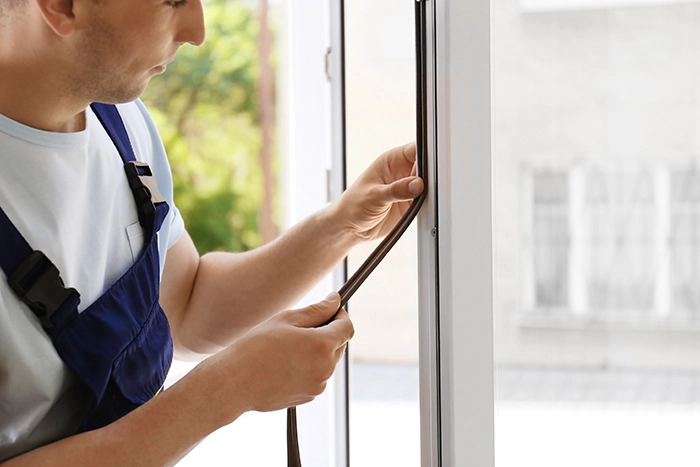Window maintenance is essential all year, but doing it before the winter season can save you from stepping out and doing patch-up work during the harsh cooler months. Leaks, drafts, and poor insulation can cost a lot if they are not fixed.
Any opening in your house lets air in and out. You might not even notice it for most of the year, but you’ll realize your place is cooler in the winter, and your energy bills are higher. That’s not a situation you want to be in during winter.
Here are some windows maintenance tips you can do to winterize your home in Winnipeg.
Do a thorough checkup.
A thorough windows Winnipeg maintenance starts by checking to see if all your windows work. All inspections must be tailored to the specific kind of window you have. Different types of windows display various signs of fixing or replacement, but there are some common problems to watch out for. Check for leaks, cracks in the material, paint chips, broken sealant, and issues with the openings and cranks.
Check the fit of the windows. The chance that your windows still fit as well as they did on installation day decreases over time. With use and exposure to the changing seasons, frames and sashes expand and contract in size. As years go by, window apertures that were once a perfect fit may become problematic. As a result, a gap between window parts may occur, increasing air and water intrusion.
Cleaning the window tracks is more imperative than wiping the glass clean. Dirt and debris may build in your window tracks, causing them to get stuck. Removing the dirt and debris out will help prevent this. To keep your windows opening and shutting efficiently, use a dry brush to clean the tracks. You can also use soap and water to clean any dirt that a dry brush can’t remove.
Look closely at the caulk around the windows.
During the winter, window caulking is vital. The sealant is the barrier. It creates a barricade between the frame and the outer paneling. It all helps to keep the windows air and watertight. Water can enter through cracked window sealant. Even minor leaks can snowball into a bigger, and more costly, problem.
Pay special attention to the caulking around the bottom corners of windows and in between panels where water is prone to pool. If any part of the window sealant is damaged, cracked, or completely missing, it must be replaced as quickly as possible.
Scrape out any loose caulking from the window frame with a putty knife. Use a caulk gun or sealant strips around the internal wall frame to fill any gaps or cracks.
Using expanding foam spray, which is done using a foam shooter gun, is another simple method for sealing around windows.
Replace the window weatherstripping.
Weatherstripping halts energy from escaping through windows by keeping drafts from coming in. When properly installed and maintained, suitable weatherstripping can result in significant energy savings.
Good weatherstripping can reduce air leaks. It should be snug and cover the gap between the window pane and frame. There are different materials you can use for weatherstripping, and what you need may depend on your window type. Foam with adhesive, felt strip, spring V-seals, and tube-shaped rubber seals are some of the most used.
Most of the time, you can just unlatch the old ones and replace them with the new weatherstripping best for your window type. If replacing the strip gets complicated or causes more damage, calling a local expert can help.
Test the handles, locks, and latches.
A window that won’t shut properly will allow in air and water. Due to constant use, handles, locks, latches, and other closing mechanisms may wear out or break. Open and close each window to check that everything is in working order. Lock and unlock the latches to see if there’s a kink. Scrub or lubricate anything that sticks or is hard to use. If deep cleaning and lubricants are ineffective, the gear may need to be fixed or replaced.
Drape thermal curtains.
Thermal drapes and curtains feature a special lining that keeps warm air inside during the cold season and heated air out during the summertime. Not only do they protect against the chill, but they also minimize noise and block out the sun.
Thermal curtains may be hung on the window sill or the floor. Put them closest to the window to trap the cold air before it pervades the room. You could also overlap the curtain panels or secure them closer to the wall to keep the cold air out.
Thick, heavy thermal drapes are quite expensive, but they’re worth the investment. They are aesthetically pleasing too. Moreover, you can choose the drapes that match your interior.
Get professional help.
Window winterization all boils down to energy efficiency. Cleaning, repairing, caulking, sealing, weatherstripping, lubricating, and locking your windows all contribute to their efficiency during the harsh winter.
However, these pre-winter preps and maintenance can only do so much. Over time, you may find all your efforts will not work as well as they used to. When this happens, replacing your old windows with energy-efficient ones can be a better option. Checking out your local window installation provider can be a great help.
Arctic Star is a top door and window installation company in Winnipeg that can provide simple and quick window replacement and installation services within the city and its neighboring areas. If you want to switch your old windows to more energy-efficient ones or need professional help winterizing your home, this is the company to call. Contact here to get a free quote.

